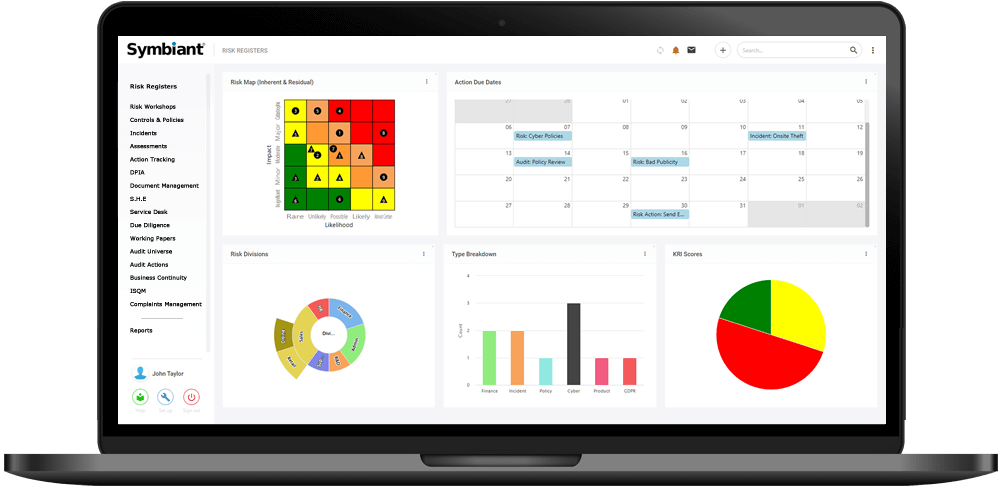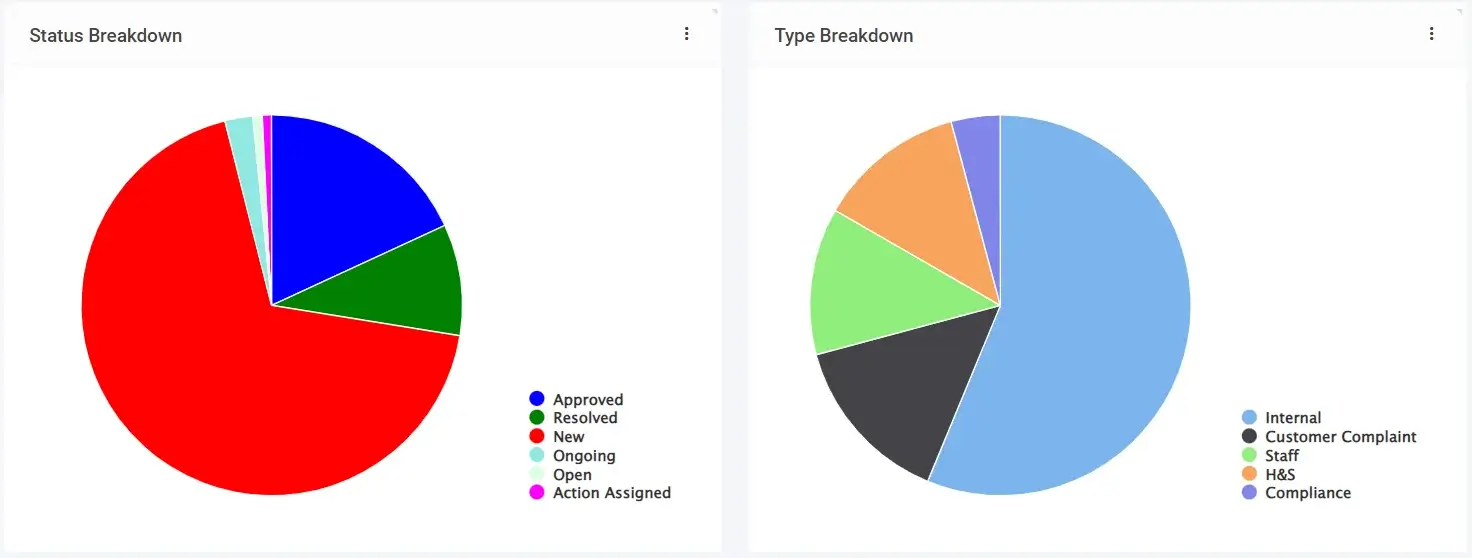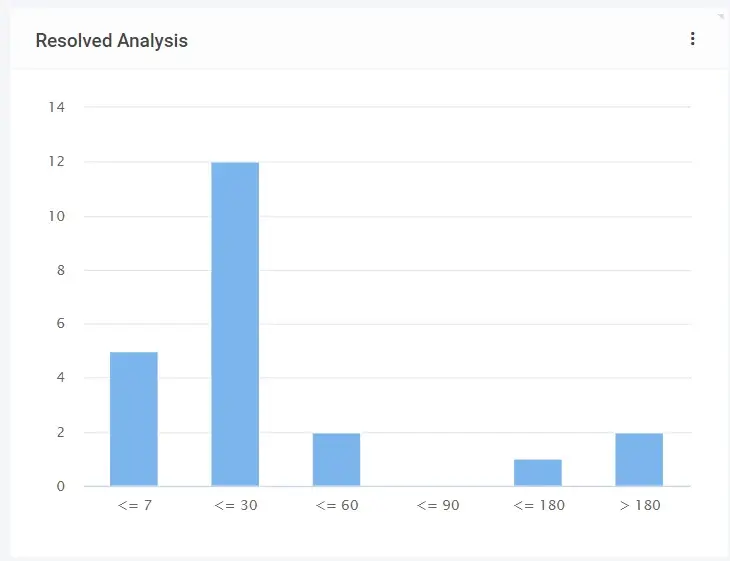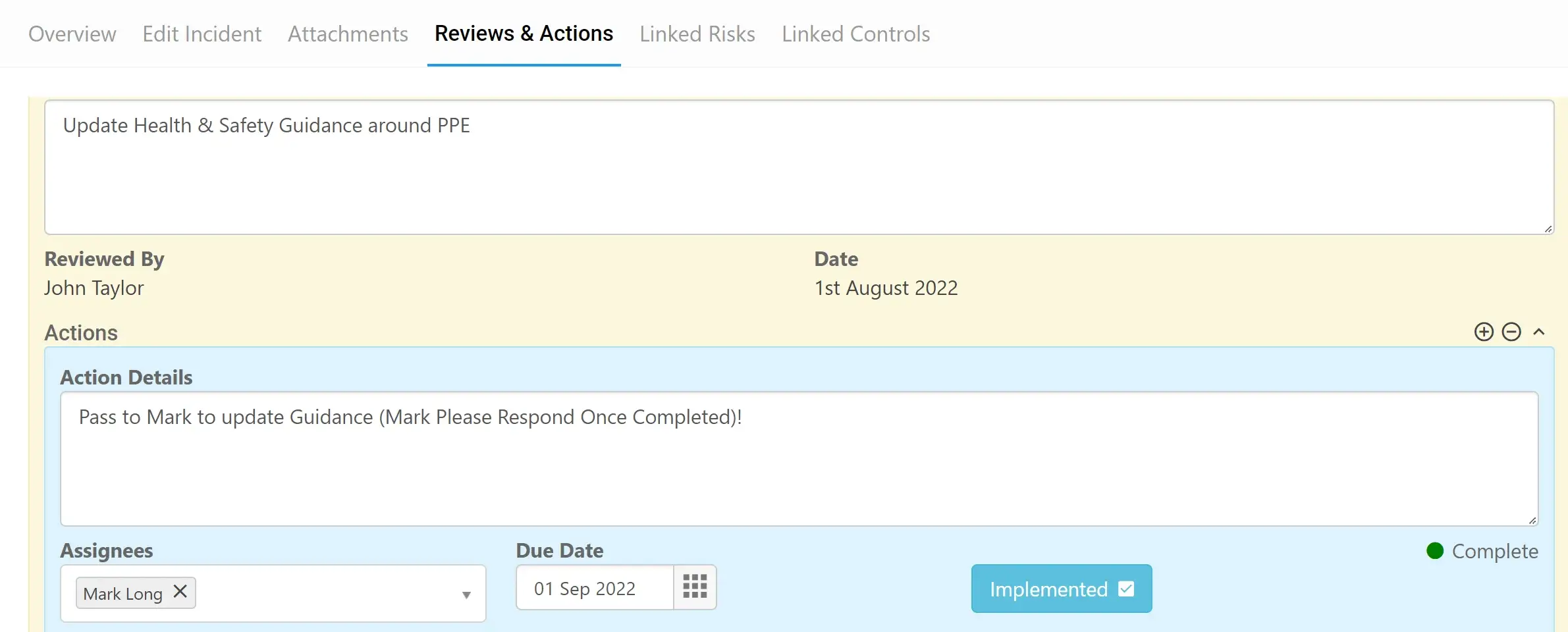The Symbiant Risk Incident Reporter Software Module is an easy-to-embed, user-friendly & intuitive platform that allows users to report incidents in a simple, central repository. The solution allows for simplified or complex user forms based on their role or division.
The module seamlessly connects with other solutions to give contextual awareness and integrated GRC across the business. When a user reports an incident, this can set off an automated chain of events to impact other modules, such as the Risk Register Software Module.
Symbiant One enables you to be more efficient and effective by automating tasks and sending notification emails and updates.
Symbiant can fit your company’s exact needs, whatever they may look like.
All modules are only £100 each per month.

Overview
The Symbiant One Risk Incidents Reporter Module is a comprehensive, simple and fully featured Risk Incident Management Solution.
Symbiant Risk Incident Reporter Software Module for only £100 per month
Features
Dynamic Reporting
Real-Time Statistics about Critical Incidents impacting your Organisation.
Ensuring Real-Time Information.
Delegate Responsibilities
Delegate Incident Management Tasks to different user Roles and Divisions
Better management, and faster resolutions.
Action Tracking
Track Actions, Assign Users and Add Action Due Dates.
Greater Control over Incidents.
Module Linking
Ability to Link Incidents to Risks and Controls seamlessly together.
Enabling even further functionality.
Build a perfect structure of information flow.
Automated Emails
Automated Emails ensure users are aware of new or pressing Incidents. While reminders, ensure no incident task is left incomplete.
No more chasing if a task is due.
Fully Customisable
The entire Risk Incident Reporter Software Module can be tailored and customised to your exact requirements.
All the power at your fingertips.
About Symbiant Risk Incident Reporter
The incident reporter module provides a simple, central repository for users to log risk events. The incidents can then be linked to risks and controls. This helps in the assessment of these related items.
You can use charts to filter your data. The filtering is accumulative. This allows you to select multiple criteria. The data immediately changes to reflect your selected choices.
When a user reports an incident, it can trigger an automated notification email, Ensuring “the right people” are aware of the issue.


All views and forms can be customised to meet individual user needs. Such as allowing some users to have simplified forms. Or be able to log specific data based on their role, or department.
As with all of the Symbiant modules, you can modify and change the layouts to suit your requirements and the individual requirements of your users.
Incidents can be linked to existing risks, or, have new risks created from them. This allows risk owners to see linked events, so they can consider them when reviewing the risk.
The same applies to controls. You can create new, ones or link the incident to existing ones.
Reviews or audits of the controls can then consider the related incidents in their assessment.
With the added ability to be able to create action plans to resolve issues, the module is a comprehensive and flexible solution to the logging of any events.
Once the incident has been reviewed, and related information assessed. A plan of action can be created.
The plan can include a review summary and a set of actions. These actions can be assigned to multiple people and include a due date.
An automated email can notify the assignees of the assignment. They can then update the action with their progress, and attach any supporting documentation. They can also let you know if they have completed the task.
When a user updates an action, another automated email can be triggered to notify a manager. The manager can then read the user’s update, and if required, comment or add further actions.

Privacy Overview
| Cookie | Duration | Description |
|---|---|---|
| cookielawinfo-checkbox-analytics | 11 months | This cookie is set by GDPR Cookie Consent plugin. The cookie is used to store the user consent for the cookies in the category "Analytics". |
| cookielawinfo-checkbox-functional | 11 months | The cookie is set by GDPR cookie consent to record the user consent for the cookies in the category "Functional". |
| cookielawinfo-checkbox-necessary | 11 months | This cookie is set by GDPR Cookie Consent plugin. The cookies is used to store the user consent for the cookies in the category "Necessary". |
| cookielawinfo-checkbox-others | 11 months | This cookie is set by GDPR Cookie Consent plugin. The cookie is used to store the user consent for the cookies in the category "Other. |
| cookielawinfo-checkbox-performance | 11 months | This cookie is set by GDPR Cookie Consent plugin. The cookie is used to store the user consent for the cookies in the category "Performance". |
| viewed_cookie_policy | 11 months | The cookie is set by the GDPR Cookie Consent plugin and is used to store whether or not user has consented to the use of cookies. It does not store any personal data. |